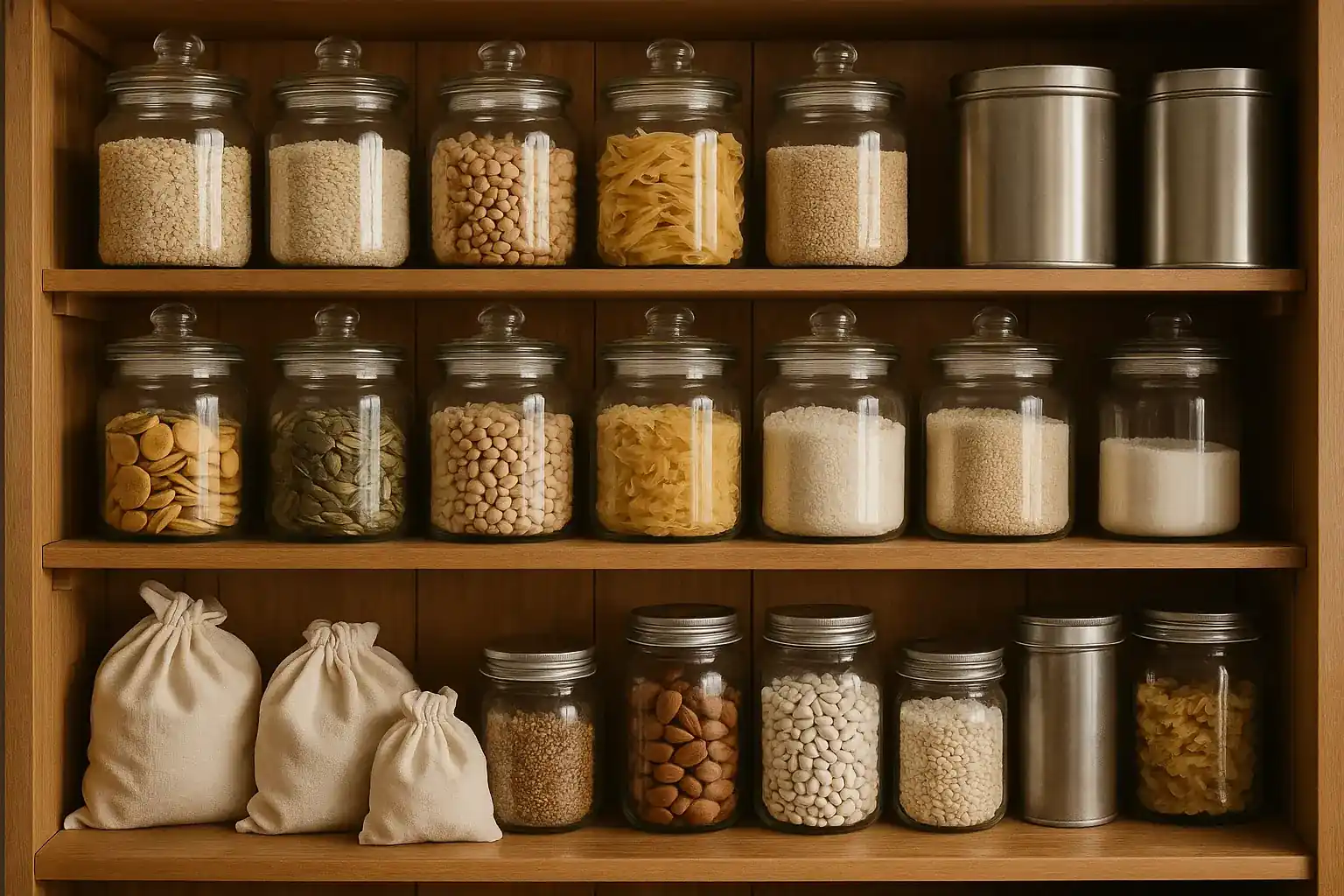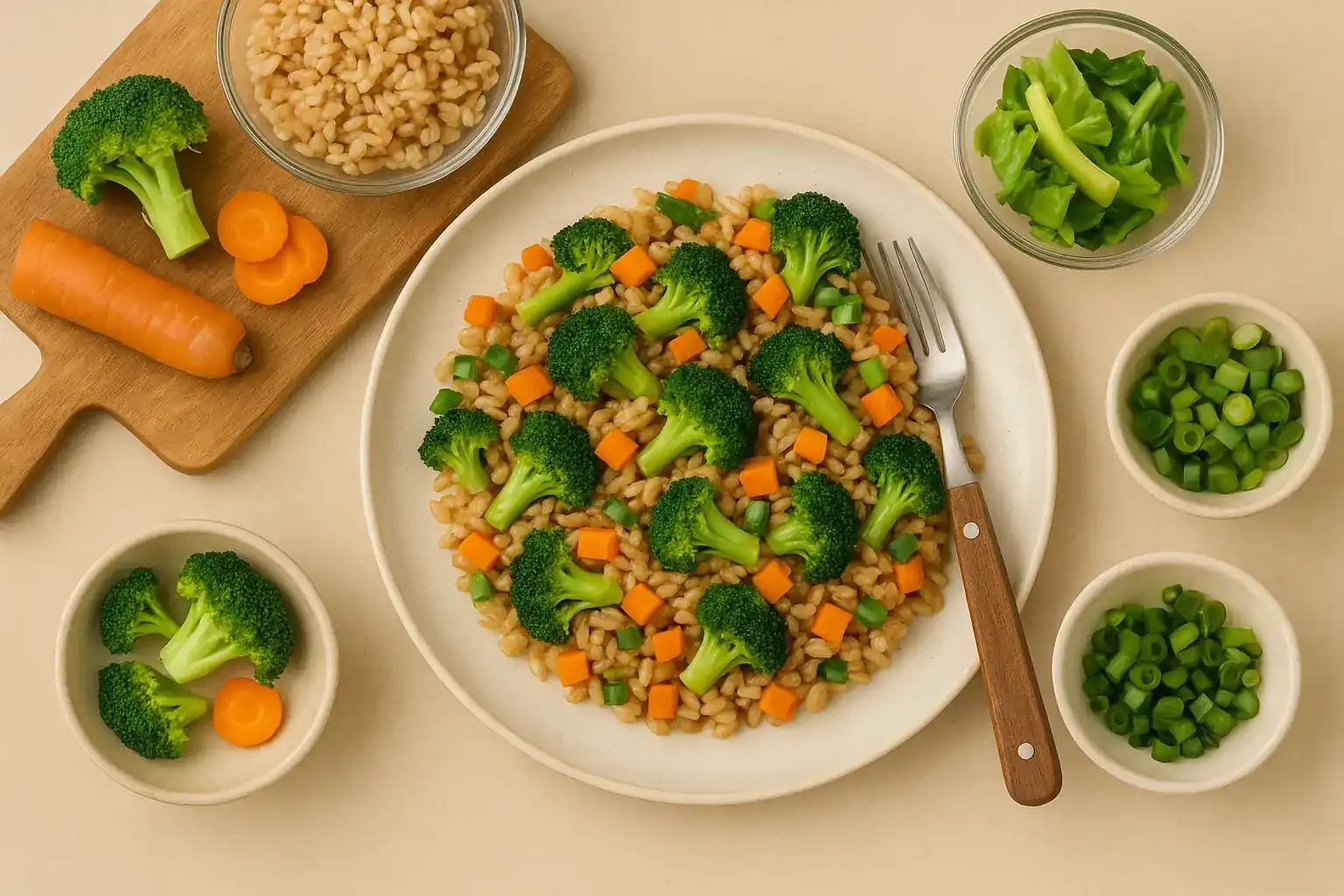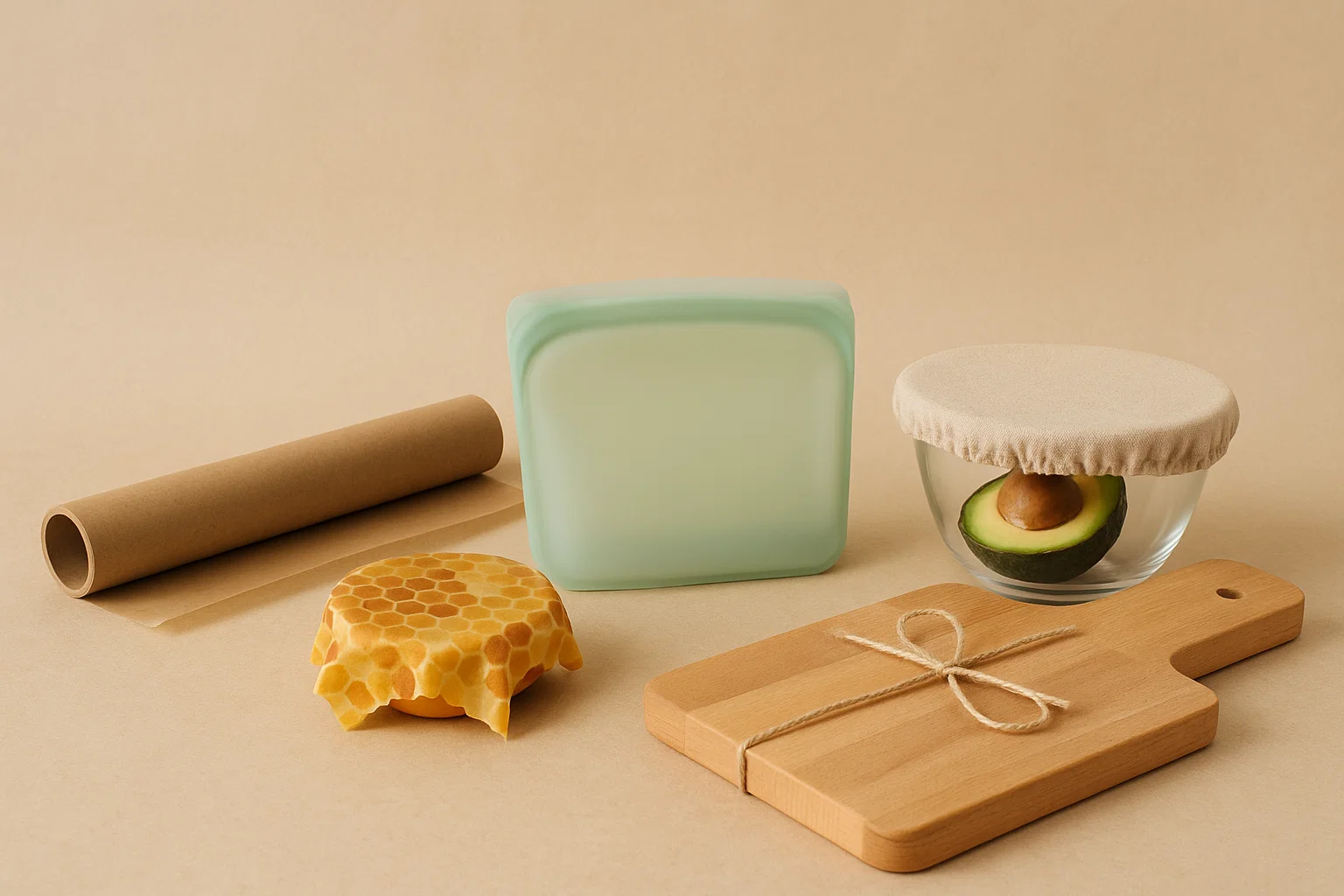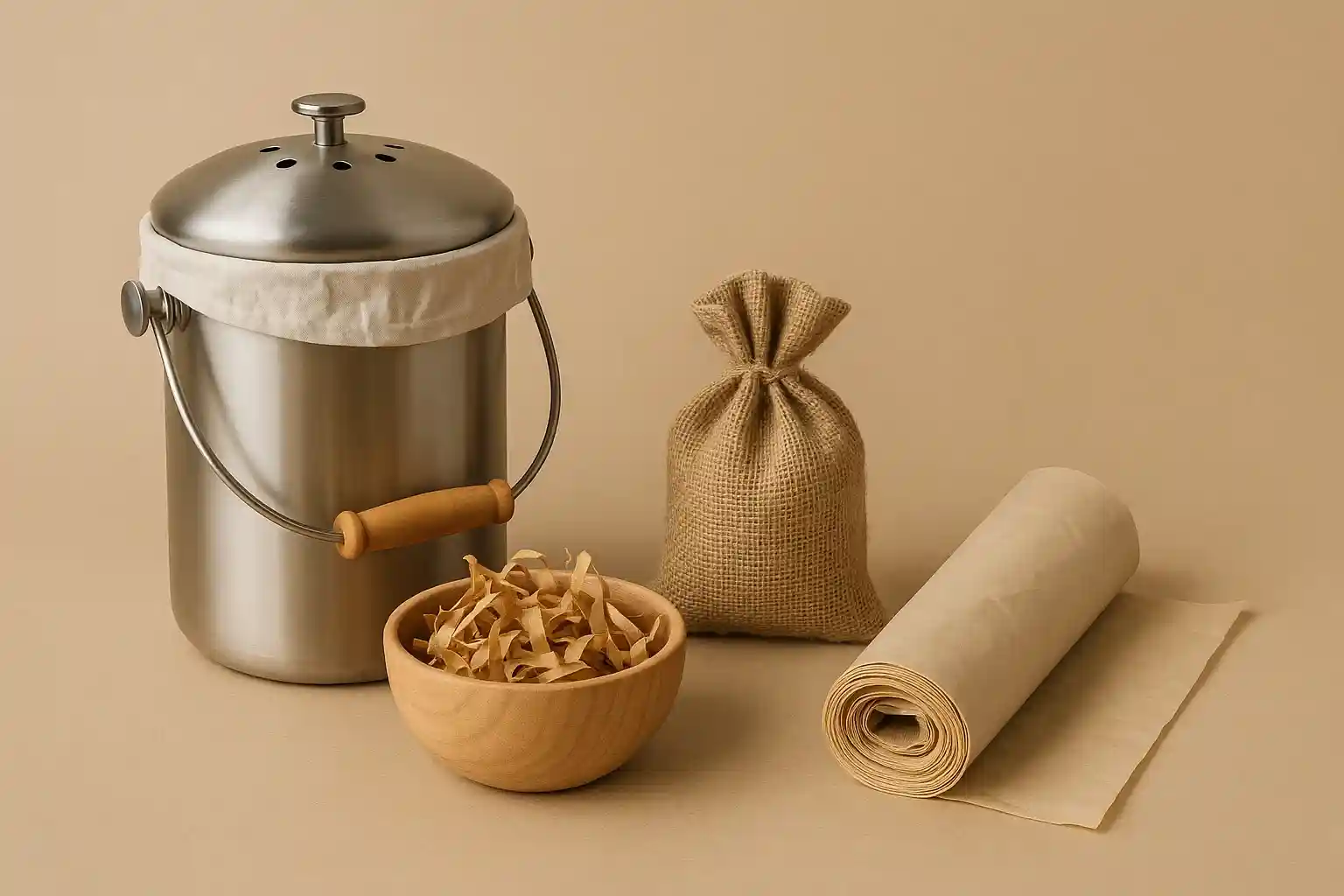From Cart to Counter: Building Your Zero-Waste Grocery Shopping Routine

The grocery store is a necessary stop in our lives, but it's also a major gateway for single-use plastic and unnecessary packaging entering our homes. From plastic-wrapped vegetables to bags of pasta inside cardboard boxes, the layers of waste can quickly pile up.
Feeling overwhelmed by the plastic mountain in your shopping cart? You're not alone! But the good news is that building a zero-waste or low-waste grocery shopping routine is entirely achievable. It's not about being perfect overnight; it's about making mindful choices and establishing simple habits that significantly reduce your environmental footprint.
Ready to shop smarter, save money, and reduce waste? Let's break down how to build your zero-waste grocery shopping routine, step by practical step.
Why Go Zero-Waste at the Grocery Store?
The impact of grocery packaging is substantial:
- Plastic Pollution: Much of the plastic packaging used for food is single-use and non-recyclable, ending up in landfills or polluting our environment for centuries.
- Resource Consumption: Creating packaging requires energy, water, and raw materials.
- Transportation Emissions: Packaging adds weight and volume, increasing transportation emissions.
- Waste Burden: Managing packaging waste strains local waste systems.
By adopting a zero-waste routine, you directly combat these issues at the source.
Step 1: Prep Like a Pro (Before You Go)
Success in zero-waste shopping starts before you even leave the house.
- Plan Your Meals & Check Your Pantry: This is foundational. Knowing what meals you'll make helps you create a focused shopping list. Checking your pantry, fridge, and freezer prevents you from buying duplicates and ultimately reduces food waste (a huge part of the overall food footprint!).
- Assemble Your Zero-Waste Kit: This is your arsenal against packaging. Keep these items together by the door or in your car so you never forget them:
- Reusable Shopping Bags: Several sturdy bags for carrying everything home.
- Reusable Produce Bags: Lightweight mesh or cloth bags for loose fruits, vegetables, and herbs (instead of the plastic ones provided).
- Reusable Bulk Bags: Slightly heavier cloth bags for dry bulk goods like grains, beans, nuts, seeds, pasta, and snacks.
- Reusable Containers/Jars: Bring a few clean glass jars or lightweight containers with lids for items like olives from the deli counter, cheese, meat, seafood, or even wet bulk items like nut butters. Choose containers with tare weights marked (the weight of the empty container) if possible, or ask the store if they can weigh it for you.
- Research Your Shopping Destinations:
- Bulk Stores: Seek out dedicated bulk food stores where you can fill your own containers for a wide range of products.
- Farmers Markets: Often the best place to buy produce package-free directly from growers. Many also offer baked goods, eggs, or other items with minimal packaging.
- Grocery Stores with Bulk Sections: Most major supermarkets now have bulk bins, though the selection varies.
- Deli/Butcher/Cheese Counters: Call ahead or check if they allow you to bring your own containers.
- Make a Detailed List (and Stick to It!): This ties back to meal planning. A list keeps you focused on what you need, reducing impulse buys that often come with unnecessary packaging.
Step 2: Shop Smart (During Your Trip)
Now, put your plan into action at the store.
- Don't Forget Your Kit! This is the most important step. If you arrive without your bags and containers, you'll be forced back into packaged options. If you forget, consider doing a smaller shop or only buying items that come in easily recyclable materials (like glass jars or metal cans) or no packaging at all.
- Head for the Bulk Bins First: Use your reusable bulk bags for dry goods. Make sure to note the product code (often on a tag above the bin) and/or the tare weight of your bag/container so the cashier can deduct it.
- Choose Loose Produce: Opt for individual fruits and vegetables over those pre-wrapped in plastic or on Styrofoam trays. Use your reusable produce bags. Don't need a bag for that single onion or avocado? Just put it directly in your cart!
- Consider Packaging Materials When Loose/Bulk Isn't an Option: If you have to buy packaged goods, choose items in materials that are more easily and widely recycled in your area (glass, metal, paper/cardboard) over difficult-to-recycle flexible plastics, pouches, and multi-material packaging.
- Ask at the Counters: Politely ask the staff at the deli, butcher, or fish counter if they can place your items directly into your clean, reusable containers. Be prepared for some places to say no due to health regulations, but many are becoming more accommodating.
- Say No to Unnecessary Bags: When checking out, tell the cashier you don't need bags for individual items (like a single bottle or a boxed item) and that you have your own reusable shopping bags ready.
Step 3: Store & Sustain (After Shopping)
Your zero-waste routine continues once you're home.
- Proper Storage at Home: Transfer your bulk items into airtight containers (glass jars work wonderfully as they are non-reactive, airtight, and you can see the contents). Store produce appropriately – some in the fridge crisper, some on the counter, some in your reusable produce bags to maintain humidity. Proper storage keeps food fresh longer, reducing food waste.
- Handle Unavoidable Waste Responsibly: For any necessary packaging you did bring home, rinse containers, flatten cardboard, and sort items correctly for your local recycling program. Understand what your local system accepts.
- Keep Your Kit Ready: Once unpacked, wash your reusable bags and containers (especially those used for bulk or counter items) and immediately put them back in your designated "zero-waste kit" location so they're ready for your next shopping trip.
It's a Journey, Not a Race
Building a zero-waste grocery routine takes practice and patience. You won't do it perfectly every time, and that's okay! Some items are still hard to find without packaging depending on where you live.
Celebrate the small wins – every plastic bag avoided, every bulk item chosen, every container refilled makes a tangible difference. This routine not only reduces waste but can also make you a more intentional shopper, potentially saving you money and encouraging you to cook more with whole ingredients.
Start today by assembling your kit and identifying one or two swaps you can make on your next grocery run. Your habits have power, and choosing zero-waste shopping is a powerful step towards a more sustainable future, one trip to the store at a time.
Related Blogs

Say Goodbye to Single-Use: 10 Easy Swaps for a Plastic-Free Pantry
Insights on 10 easy swaps for a plastic-free pantry in a sustainable way.

A Week of Delicious Transformations: Zero-Waste Recipes Using Your Leftovers
Insights on a week of zero-waste recipes using leftovers in a sustainable way.

Beyond the Foil: Reusable Alternatives for Sustainable Baking and Food Storage
Opt for reusable silicone baking mats, covered bakeware, and beeswax wraps instead of aluminum foil.

Brew Better, Waste Less: Sustainable Alternatives to Single-Use Coffee Pods
Lower waste and enjoy better flavor with reusable pods, French presses, or Moka pots.

Compost Without the Carry-On: Sustainable Alternatives to Store-Bought Compost Bags
Reduce unnecessary plastic in composting with newspaper liners, bag-free bins, or DIY liners.

Compost Happens (Even in Apartments!): Your Beginner's Guide
Practical advice and actionable tips for composting 101.
Stay in the Loop
Get tips and insights tailored to your interests — no spam, just sustainability.